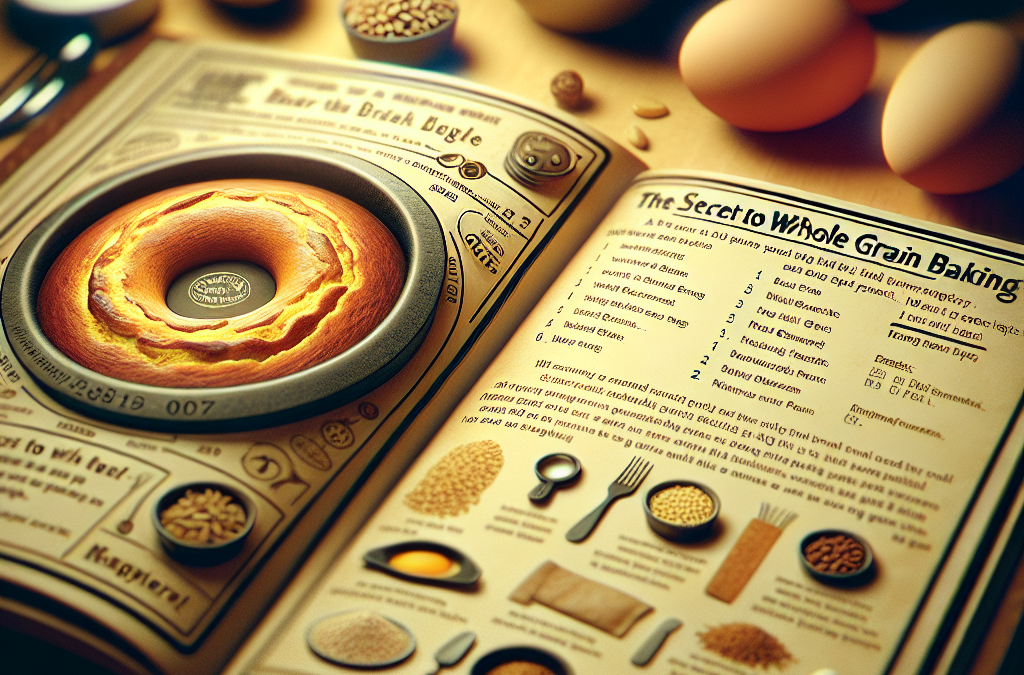Original Semantic Keywords
- Whole grain flour benefits
- Techniques for baking with whole grains
- Adjusting recipes for whole grain baking
- Common mistakes in whole grain baking
Whole Grain Flour Benefits
From my personal experience, using whole grain flour is like embracing the wholesome goodness nature offers us. One of its standout benefits is the retention of nutrients. While refined flour loses a major chunk of its healthy components during processing, whole grain flour stays true, packing fiber, iron, and B vitamins.
Now, who doesn’t want that extra health boost in their muffins or bread? Not to mention, whole grain flours give your baked goods a distinct nutty flavor and texture, which always reminds me of my grandma’s kitchen, filled with comforting, rustic aromas.
And let’s talk about variety – whole grain flours come from a rainbow of grains. Whether you’re working with wheat, oats, or even quinoa, each offers its unique taste and nutritional profile, making whole grain baking an adventurous culinary journey.
Techniques for Baking with Whole Grains
The first technique I swear by when diving into whole grain baking is patience. Unlike refined flour, whole grain tends to absorb more liquid, leading to slightly denser doughs. So, let that dough rest! Allowing your mixture to sit longer helps to hydrate fully, leading to softer and more cohesive baked results.
Another pro tip is blending flours. I often mix different whole grain flours with a bit of all-purpose to keep my cakes lighter. This doesn’t just bring balance in terms of texture but adds layers of flavors that sing together.
And ye who love your yeast: pay attention to it. Whole grain dough can sometimes slow fermentation due to the heavier flour. Increasing the rise time just a smidge can work wonders and has saved my sourdough more than once.
Adjusting Recipes for Whole Grain Baking
When I start adjusting recipes, I remember that whole grain flour is thirstier than its refined counterparts. My first move is to increase the liquid content of my go-to recipes. Whether it’s water, milk, or even fruit puree, it often needs more moisture.
Another tweak is sweetener and fat adjustments. Whole grains can have a more robust flavor, sometimes needing an extra punch of sugar or syrup and a bit more oil or butter to counteract any bitterness.
I also love playing around with baking times and temperatures. Whole grain goodies can brown faster. A slight reduction in oven temp by about 25 degrees Fahrenheit and keeping the baking time under my watchful eye usually produces the perfect loaf or batch of cookies each time.
Common Mistakes in Whole Grain Baking
I’ve made my fair share of snafus in whole grain baking. One frequent rookie error is not adjusting for density. Whole grain flours can turn your fluffy cake dreams into a brick reality if you’re not careful. Lightening up the batter using baking powder or soda has been a game-changer for me.
Another pitfall? Ignoring the flavor profile. Whole grains have a pronounced flavor, so it’s crucial to balance them with the right amounts of seasoning and zest. Cinnamon, vanilla, and citrus zests are my go-tos.
Lastly, forgetting to experiment can be a mistake. Whole grain baking is one big, tasty science experiment. Each grain comes with its quirks, so don’t hold back on trying new combinations and ratios. That’s where the magic happens!
FAQs
What are the health benefits of using whole grain flour?
Whole grain flour retains nutrients like fiber, iron, and B vitamins that are often lost in refined flours, aiding digestion and overall health.
How does whole grain flour affect the texture of baked goods?
Whole grain flour can make baked goods denser if not adjusted properly. It’s crucial to let the batter hydrate and consider blending flours for better balance.
Can I replace all-purpose flour with whole grain flour in recipes directly?
Not directly. Whole grain flour requires more liquid and sometimes fat adjustments for optimal results when replacing all-purpose flour.
Why do my whole grain baked goods taste bitter?
Whole grains can have a stronger flavor. Balancing out with sweeteners, spices, or even citrus zest can help neutralize this bitterness.
Related Content
Auto Amazon Links: No products found.





